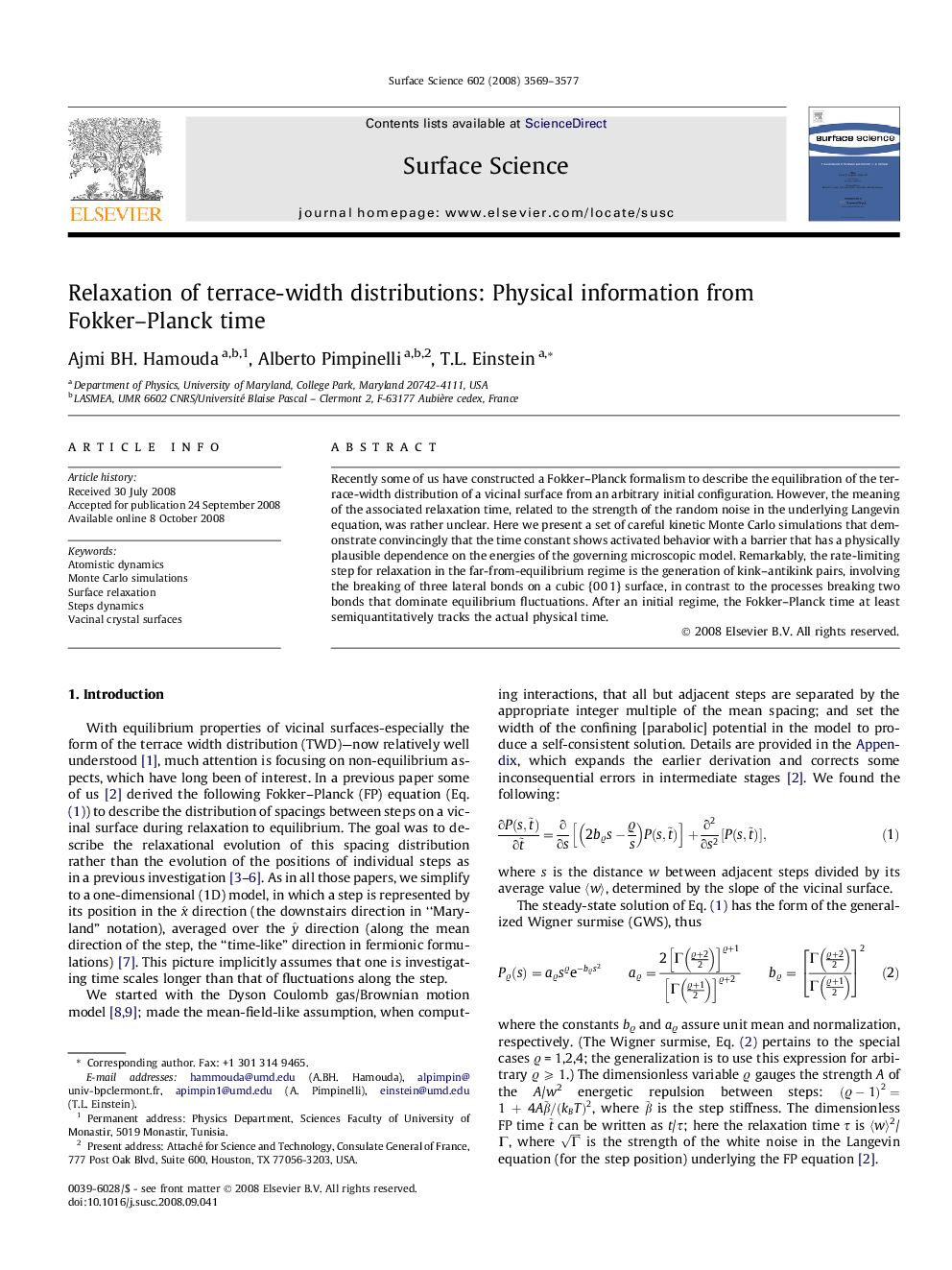| Article ID | Journal | Published Year | Pages | File Type |
|---|---|---|---|---|
| 5424165 | Surface Science | 2008 | 9 Pages |
Abstract
Recently some of us have constructed a Fokker-Planck formalism to describe the equilibration of the terrace-width distribution of a vicinal surface from an arbitrary initial configuration. However, the meaning of the associated relaxation time, related to the strength of the random noise in the underlying Langevin equation, was rather unclear. Here we present a set of careful kinetic Monte Carlo simulations that demonstrate convincingly that the time constant shows activated behavior with a barrier that has a physically plausible dependence on the energies of the governing microscopic model. Remarkably, the rate-limiting step for relaxation in the far-from-equilibrium regime is the generation of kink-antikink pairs, involving the breaking of three lateral bonds on a cubic {0Â 0Â 1} surface, in contrast to the processes breaking two bonds that dominate equilibrium fluctuations. After an initial regime, the Fokker-Planck time at least semiquantitatively tracks the actual physical time.
Related Topics
Physical Sciences and Engineering
Chemistry
Physical and Theoretical Chemistry
Authors
Ajmi BH. Hamouda, Alberto Pimpinelli, T.L. Einstein,
